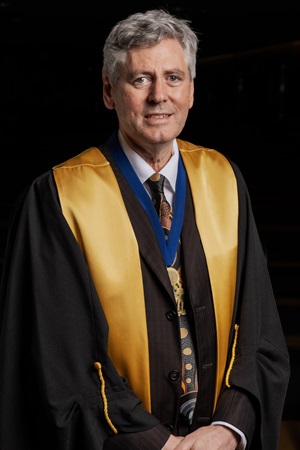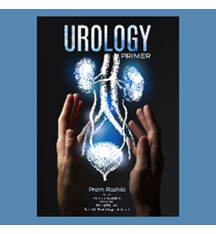2023 | Volume 24 | Issue 2
Vice president's perspective

Professor Chris Pyke
Congratulations to the incoming president Associate Professor Kerin Fielding, and vice president Professor Owen Ung. With their election, I know that the future of the College is in excellent hands.
My term as vice president is coming to an end, and as the College centenary will be upon us soon, it may be opportune to look at our Fellowship and our constitution, and ask the question—are we structured for success after 100 years of our College?
When the College was founded in Dunedin in 1927, the (all male) group was concerned with two main areas, education and professional standards. They wanted a model, which was fit for purpose for the Australian and Aotearoa New Zealand environment and set about combining the best of the existing British and American offerings, along with a bespoke, relevant constitution.
The College is a membership organisation, with all of the strengths and weaknesses which accompany this. The hierarchy is shallow, and most Fellows see our College as a ‘bottom-up’ organisation made up of successful, high achieving experts and Trainees—almost all of whom work at a hospital.
There is a natural tendency in both our countries for a degree of scepticism towards authority—this can be a strength. Surgeons value their autonomy. Council, on the other hand, has a legal responsibility to provide governance to our more than 8000 surgeons and 1300 Trainees and Specialist International Medical Graduates (SIMGs). Trying to keep up with the enthusiasm and creative drive of our Fellows is a major task for Council, who have formed more than 150 committees to engage these energetic, involved surgeons, their state and national committees, and their surgical societies.
Together, across both countries and all specialties we problem solve. Together, we share principles, and lift our sights higher. Together, we have collective bargaining. Together, we work for the greater good—even though it is hard.
Centralisation of the more disciplined tasks like the coordinated curriculum for training, governmental and educational compliance, workplace culture, shaping diversity, workforce distribution iniquity and stewardship of shared resources including money, is the role of Council. There is a constant tension around how Council needs its Fellows to ‘take direction’ on some matters. This is like the tension felt at any hospital when administration asks for a change—they don’t feel the need for the ‘greater good’, but rather, ‘why change now?’ This can be a weakness. These tensions have led groups to want to separate. I would like to explore the argument for staying as one entity.
At the bi-national level, a major benefit is that we have governance diversity built in structurally. Education wise, all specialties in both countries are similar though there are enough other differences between them from which to learn and prosper. One such example is the industrial environment. Aotearoa New Zealand doctors have strong union representation while Australian surgeons have more exposure and dependence on private medicine. There are learnings to be gained from our cross representation. Just this year, we have had ANZCA and RACS (both bi-national colleges) show teamwork and problem-solving around the shortage of anaesthetic technicians in Aotearoa New Zealand. Both countries have a responsibility to the Pacific Islands, Melanesia and Niugini.
I recently attended a most illuminating Tri-nations conference—Australia, Aotearoa New Zealand and Canada. The colleges of surgeons, physicians and psychiatrists are all bi-national.
The Royal College of Physicians and Surgeons of Canada is an umbrella organisation for all specialties except family practice. The mutual needs and challenges of these organisations are extraordinarily similar: selection, training models, examinations, continuing professional development (CPD), workforce culture, end of career planning, academic surgery, Indigenous health and rural health equity. We all have in common a very devolved mode of ‘apprenticeship’ style training—a high trust model, which leaves us open to abuse, and to complaints around the inherent high variability of experience. These vast domains of commonality easily dwarf the areas in which we are different.
Within RACS, we have had the Australian Society of Plastic Surgeons (ASPS), the Australasian Society of Aesthetic Plastic Surgeons (ASAPS), Australian Society of Otolaryngology Head and Neck Surgeons (ASOHNS), and RACS working on joint submissions to Ahpra and the Commonwealth government around the titling of surgeons and cosmetic surgery. Another example is the Fellowship examination, which shares principles seamlessly across all nine specialties. The Canadian Royal College, the British colleges, the American College, the Colleges of Medicine of South Africa all serve the needs of all nine specialties, and some include Dentistry, Ophthalmology and other specialties.
Together, across both countries and all specialties we problem-solve. Together, we share principles, and lift our sights higher. Together, we have collective bargaining. Together, we work for the greater good—even though it is hard. As my friend Angus Gray (Senior Examiner Orthopaedics) said, paraphrasing JFK, “We don’t do surgery because it is easy—we do surgery because it is hard”. It is hard to be disciplined enough to stay together, but this is the higher calling.
Our constitution is a document, which is a combination of lofty ideals and pragmatism. We are due to review it in the lead up to the RACS Centenary. Coinciding with this is a proposed change to the size and shape of Council. It is proposed that the 30-member Council—primarily popularly elected with some co-opted for representation, as a decision-making body—be changed. Most colleges and hospitals are run by a smaller ‘skills-based’ boards. We will be proposing a board structure of up to nine, the majority of whom are surgeons, with a matrix of membership, which includes representation of skills, both countries, gender diversity and rurality. The Council will still be representative and may grow as the number of surgical societies increase.
Council will still carry the surgical intellectual property, surgical culture, ethics, hopes, aspirations and ideals–the hearts and minds of the Fellowship. It will be largely responsible for creating content and recommending projects and agendas. The Board will oversee the delivery and finance and risk management. The mechanism of reporting and election will be teased out more fully before presentation to the Fellowship to consider and provide feedback.
An additional project is actively looking at categories of membership, and whether to include Trainees and SIMGs. Our Constitution is not strong on patient-centred care. It currently reads as though it is focussed mainly on our membership. A personal wish would be to have included in the document a statement reinforcing that good patient care is at the centre of every surgical decision made by the members of this College.
My next Council role is in professional standards, mainly looking after CPD—a challenging role made to look easy by our incoming president. Once again, other colleges’ CPD programs mirror ours and have large areas of crossover. Mostly, though, the challenge for the CPD department is trying to keep up with measuring the many and varied ways which our high achieving Fellows keep striving to make themselves better at their craft, through their ongoing self-directed CPD. It is a good problem to have.
The College structures have served us well thus far. That doesn’t mean that they can’t be improved. Those in Dunedin in 1927 would have wanted us to be a vibrant, engaged college, ready to respond to all challenges. The idealists among us also know that ‘The College’ is a calling, one which challenges us to work for the greater good, at the expense of our personal needs. Surgeons are naturally attracted to these challenges. We will be better able to manage these challenges if we stay together, because we are stronger together.
Perhaps this could be illustrated in a haiku couplet - disciplined poetry, this one celebrating the need to stay united:
When all fingers come together
They become a fist so strong
That it cannot be broken
But when separated
They point in different directions
And they become weak and easy

